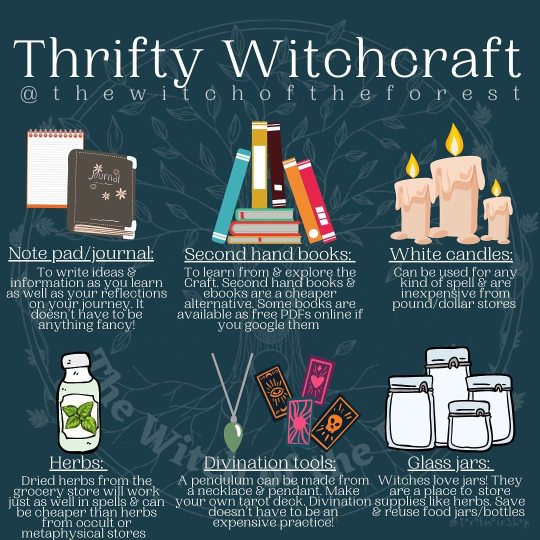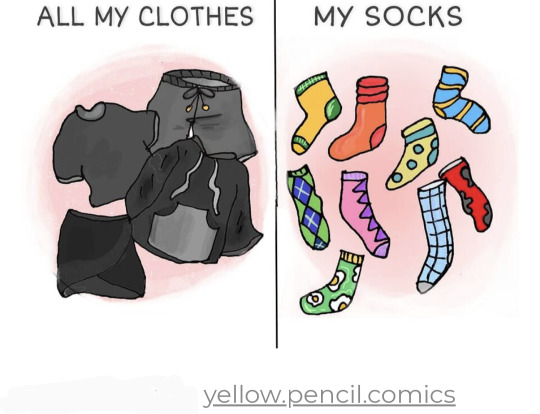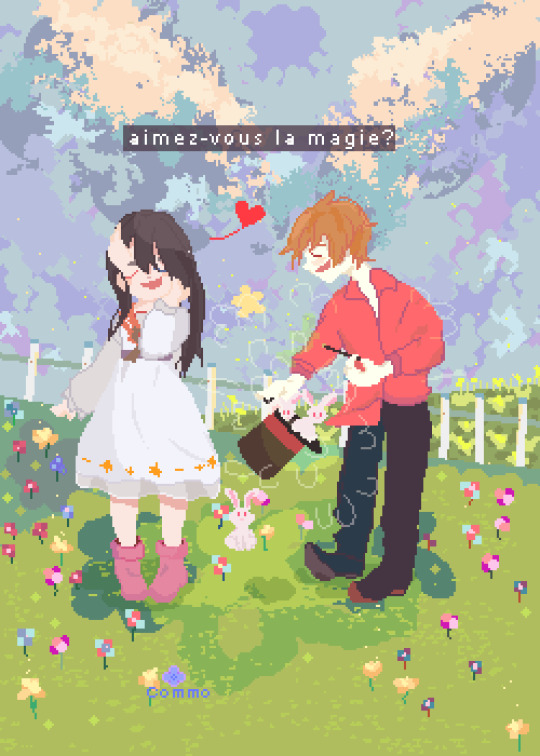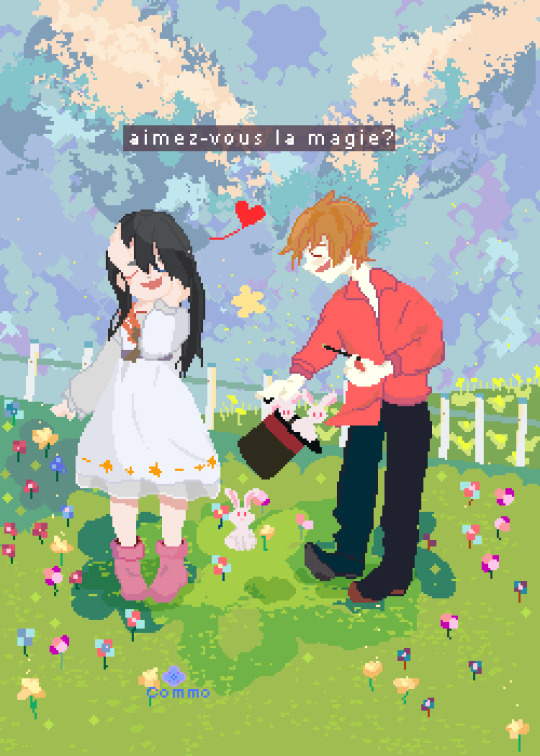Text
Normalize laughing with your deities
Normalize telling your deities jokes
Normalize playing music for your deities at any time it feels right
Normalize drawing silly little doodles for your deities regardless of skill
Normalize sharing a walk with your deities
Normalize soaking in the sunlight and dark mystery of night with your deities
Normalize letting your deities in, letting them be there
Normalize shedding tears of joy and sadness and expressing negative emotions that aren’t pretty with your deities
Normalize various levels of intimacy both casual and intense with your deities
Normalize following what works for you and your deities no matter what when it’s just about you and them, no one else
2K notes
·
View notes
Text

Iba a ser solo un dibujo entre Ares y Minerva, pero mi lápiz empezó a hacer cosas raras. 👀✨
52 notes
·
View notes
Text
Witch Exercises
1) Concentration
Get a candle, any candle, doesn't matter what colour it is. Hell it can be a tealight, even a scented candle (but make sure that the candle isn't too strongly scented). Now, set a timer for two minutes, and put it aside. Light the candle and stare at the flame for two minutes. Yes, direct your entire focus and mind on that little flame. If thoughts come into your head, redirect your focus to the candle. If you wanna look somewhere else, redirect your focus to the candle (within reason of course, if you have something urgent like a parent calling you or something then answer and do this exercise later). What this does is two things - one, the flame and staring into it is believed to have properties to empower psychic abilities. 2) By doing this consistently, you have begun to learn how to push out everything else and direct your concentration into one thing (so now you can concentrate on your intent better instead of just suddenly thinking of what you need to do for dinner). RInse and repeat. No candle, then get a picture or something else suitable to you. I do this when praying, whenever I pray the Our Father on the Rosary, I focus on a picture of God as the Trinity. The Hail Marys, I focus on a picture of Mary who strikes down the dragon or Mary, Mother of Graces.
2) VIsualizatio.
Get something. It can be a vase or an apple, or even some money. Look at it for a couple of minutes, toss it around in your hands. If you have aphantasia then instead of visualizing, you would essentially just know (like instead of trying to visualize and feel energy in your body, you just know there's energy in your body. I don't believe, I know is one of the most powerful thing's I've seen.) When its done; put it down and close your eyes and form it in your mind, every detail. Know what it looks like, know its colour, know its smell, know what it feels like, know the emotions it brings, what sound would it make if it fell down, what does it taste like? Then hold that knowing or image in your head for as long as possible (again, you can set a timer for two minutes) - what this does is 1) concentrates your mind on something and accurately replicates it 2) gives you the ability that after this in spells you'll be able to better visualize because you were able to pick up how to ues the five senses in it and so on.
3) Breathing
Go to Wim Hof's youtube channel, I don't trust anyone else except him.
4) Meditation - you know that candle thing up there - yeah it was meditation. Walking around can be meditation, drawing and journalling can be meditation. When we pray the rosary; we're asked to meditate on the mysteries but I've interpreted simply as contemplating. Mindfulness is contemplating the experience of the now. Meditation is not about no focus, its about directing your focus to something (like walking, breathing, the candle flame) and letting your mind relax, clear itself out and be more receptive to trances, magick, psychic abiliies etc. prayer in itself is meditation.
683 notes
·
View notes
Text
Finding Your Identity as a Witch - Tips For Building Your Foundation
Tip 1: "Witch Type" labels are fun, but limiting
Labels help us categorize things, but we as witches do not need to categorize ourselves by our tools or aesthetics, else we might accidentally trap ourselves in a very limited practice without meaning to. I think it is the natural progression to grow out of this as one grows as a witch, but I think it's also good to say upfront to the beginner that if no label fits, it's OKAY. Most "witch type" labels fall away eventually anyway.
Tip 2: Let the things that interest you guide you
Inspiration and direction comes from many places. Make a list of your interests, no matter how diverse or seemingly disconnected with witchcraft. Keeping a list of your interests is great to help you identify your craft. You can add to the list at any time. If you ever feel stuck or directionless in your craft, look back to your list - it's what makes you...YOU!
Tip 3: The building blocks of your craft are your skills + knowledge
Identify some natural skills you have and start there for your craft. That doesn't just mean psychic skills or natural aptitude in magic. This can be knitting, drawing, sewing, cooking, singing, dancing, writing, etc. Apply what knowledge you gain through studying the craft to the skills you already have, and then branch out from there. Add new skills to the old as you learn, just like building a house.
Tip 4: Religion can (but does not have to) be a part of your craft's identity
Religion can inform quite a bit of what you want your craft to be. Or it can be totally devoid of religion, if that's what you want.
Tip 5: Study Different Systems of Magic
Magic works different ways depending on what system you subscribe to. Witchcraft tends to base much of its systems on sympathetic magic, but you can also incorporate elements of planetary, folk, ceremonial, or other systems. Or find that you'd rather be a ceremonial magician than a witch. Be well-versed in the systems of magic out there so you can fine-tune your personal one.
451 notes
·
View notes
Text

Choosing a patron goddess? - Hecate
HEKATE (Hecate) was the goddess of magic, witchcraft, the night, moon, ghosts and necromancy. She was the only child of the Titanes Perses and Asteria from whom she received her power over heaven, earth, and sea.
Hekate assisted Demeter in her search for Persephone, guiding her through the night with flaming torches. After the mother-daughter reunion became she Persephone's minister and companion in Haides.
Three metamorphosis myths describe the origins of her animal familiars: the black she-dog and the polecat (a mustelid house pet kept by the ancients to hunt vermin). The dog was the Trojan Queen Hekabe (Hecuba) who leapt into the sea after the fall of Troy and was transformed by the goddess. The polecat was either the witch Gale, turned as punishment for her incontinence, or Galinthias, midwife of Alkmene (Alcmena), who was transformed by the enraged goddess Eileithyia but adopted by the sympathetic Hekate.
Hekate was usually depicted in Greek vase painting as a woman holding twin torches. Sometimes she was dressed in a knee-length maiden's skirt and hunting boots, much like Artemis. In statuary Hekate was often depicted in triple form as a goddess of crossroads.
Her name means "worker from afar" from the Greek word hekatos. The masculine form of the name, Hekatos, was a common epithet of the god Apollon.
Beautiful illustration by: @roytheart_
45 notes
·
View notes
Text
An Actual Reading List For Anyone New To Paganism & Witchcraft
*ˢᵃᶠᵉ ᵀᵒ ᴿᵉᵇˡᵒᵍ ᴮᵘᵗ ᴷᵉᵉᵖ ˢʰⁱᵗᵗʸ ᴼᵖⁱⁿⁱᵒⁿˢ ᵀᵒ ʸᵒᵘʳˢᵉˡᶠ
I find myself typing the list below quite often every time I see beginners in the tags requesting resources, saying they don’t know where to start. In an effort to save my poor eyes and fingers from Tumblrs ridiculous comments system, I’m just going to make a single post to refer people back to.
It is important that you read these books in the exact order they are listed in the post, to the best of your ability, as they are listed this way in order to help you develop necessary skills and understandings that will become relevant as you progress further along the list.

Each link will direct you to free copies of the book except when a link is marked with an asterisk (*). These signified paid books where I was unable to find a free copy. If you cannot find a free copy yourself with some digging, I suggest requesting it from your library through the Inter-Library Loan System if you are near a participating library, through a similar Academic Lending System if you are in a college that has one, or through another Library Consortium if available, etc.
Also note that, because these are free books, some of these may be older editions of these texts. Newer editions may be available, especially of Academic ones. If you know or find out about a newer edition of a text listed here, you may want to check with your local Library to see about getting the newer edition lended instead, and opting to read that edition over the one linked.

Historical Literacy
Gives you an idea of how Archaeology and similar fields function, an the dangers of fake archeology and science, and how it damages historical literacy and spirituality; this is an integral skill to build first in order to help you parse information later.
1. Landscape of History: How Historians Map the Past
2. Frauds, Myths, and Mysteries: Science and Pseudoscience in Archaeology
3. Convenient Myths: The ‘Axial Age’, Dark Green Religion, and the World That Never Was
4. Archaeological Fantasies: How Pseudoarchaeology Misrepresents the Past and Misleads the Public *
5. Invented Knowledge: False History, Fake Science and Pseudoreligions
Old History
This contextualizes Christianity and Older forms of Historical Witchcraft by teaching you about their history, what Religious Syncretism is and the process of the conversion of Pagan Europe, and how Witchcraft was viewed both in Europe and across the pond during the period known as “the Burning Times” / “the Witch Trials” which so many Pagans and Witches like to harp on.
1. The Anthropology of Religion, Magic, and Witchcraft
2. Magic, Witchcraft, and Religion: A Reader in the Anthropology of Religion
3. A History of Christianity: The First Three Thousand Years
4. Syncretism and Anti-Syncretism: The Politics of Religious Synthesis
5. A History of Pagan Europe
6. The Conversion of Europe: From Paganism to Christianity
7. The Germanization of Early Medieval Christianity: A Sociohistorical Approach to Religious Transformation
8. The Oxford Illustrated History of Witchcraft and Magic
9. The Oxford Handbook of Witchcraft in Early Modern Europe and Colonial America
Contemporary History
This contextualizes modern Witchcraft starting in roughly the 20th century (the 1900′s) by teaching you about Victorian Occultism and Wicca, and several other movements which laid the foundation for what we consider Witchcraft today- which is very different than what was considered Witchcraft in previous eras.
1. Victorian Occultism and the Making of Modern Magic: Invoking Tradition
3. American Tabloid Media and the Satanic Panic *
4. Drawing Down the Moon: Witches, Druids, Goddess Worshippers, and Other Pagans in America
5. Witch: A History of Fear, From Ancient Times to the Present
6. Triumph of the Moon: A History of Modern Pagan Witchcraft
7. Magic and Witchery in the Modern West: Celebrating the Twentieth Anniversary of ‘The Triumph of the Moon’
Traditional Wicca
Whether the community wants to admit it or not, nearly all modern Witchcraft descends from or is heavily influenced or impacted by Gerald Gardner’s Wiccan religion. Understanding the foundations of Wicca- and not the mass marketed bullshit incorrectly called Wicca- then, is integral before being released into the world of said mass marketed bullshit. Thus, this final list.
These three books are an incredibly simplistic introduction to the topic- all of which contain decent additional information on the history of Wicca, its transition from Europe to America, the development of the Outer Court system, the eventual development of NeoWicca, and its further birth into Eclectic Neopaganism you find books on today masquerading as the “Wicca” so many people have issues with:
1. Traditional Wicca: A Seeker’s Guide
2. Wicca for Beginners: Fundamentals of Philosophy and Practice
3. The Study of Witchcraft: A Guidebook to Advanced Wicca

If any of these links become broken at any point, please send me an ask and I will track down a working link for you as soon as I’m able.
Or you may attempt to locate the book yourself through Library Genesis (RS, IS, or ST), which aggregates downloads from multiple sites- though it can sometimes be touchy about how a title or name is input; if it is an academic paper, you may use SciHub (RU, ST, or SE) to retrieve the paper’s link instead- though they do not always have copies of Academic papers in their database.
There are many other ways of tracking down free books and papers, but for beginners these are my two highest recommended spaces.

This is, of course, an incredibly simplistic list that doesn’t cover all topics. Druids are not mentioned, for instance. Ceremonial and Grimoire traditions (etc) are completely left out despite their significant impacts. And it is incredibly Eurocentric- especially to west and north Europe; I cannot possibly cover all bases, nor is it important to actually attempt to in a beginner’s reading list.
What is ultimately important is that once you have read all these books in the order I have listed them, you should have a very strong foundation of understanding that will allow you to parse the most common bits of bullshit pseudohistory and potential pseudoscience from reality- as well as distinguish the most basic common traditions from one another. And you will have a significantly easier time researching further on your own because of this.
*ˢᵃᶠᵉ ᵀᵒ ᴿᵉᵇˡᵒᵍ ᴮᵘᵗ ᴷᵉᵉᵖ ˢʰⁱᵗᵗʸ ᴼᵖⁱⁿⁱᵒⁿˢ ᵀᵒ ʸᵒᵘʳˢᵉˡᶠ
42 notes
·
View notes
Video
Por alguna razón se me ocurrió hacer una animación de Polka y Cyan (yo los amo :‘3) y pos bueno, he aquí el resultado!
Los personajes le pertenecen a: Commodorette
El nombre de la app que usé para hacer la animación está en la marca de agua uwu (creo que debí agregarle sonido)
54 notes
·
View notes
Photo

✨ 𝕋𝕙𝕣𝕚𝕗𝕥𝕪 𝕎𝕚𝕥𝕔𝕙𝕔𝕣𝕒𝕗𝕥 ✨
Not having a lot of money to spend on your Craft shouldn’t and doesn’t need to be a barrier to your practice. Your Craft need not cost you a fortune.
There are lots of little tricks to make the most of the ingredients and items already around you ✨
What are your favourite tips and tricks for a Witch on a budget?
Lindsay 💜
————————————————————
#thrifty #thriftywitch #magick #greenmagick #greenwitch #spells #protection #energy #nature #greenwitchcraft #bruja #esoteric #witch #witchcraft #protection #traditionalwitchcraft #wicca #pagan #bruja #goodvibes #witchesofinstagram #witches #witchy #witchythings #witchystuff #witchyvibes #vibes #witchythings
https://www.instagram.com/p/CXMPag1NFR5/?utm_medium=tumblr
64 notes
·
View notes
Text
Volver a ver algunas escenas de Time traveler después de ver Polka te pega feo y de paso te hace odiar a Vortex mucho más si te encariñarse con las brujas, y los magos.
5 notes
·
View notes













